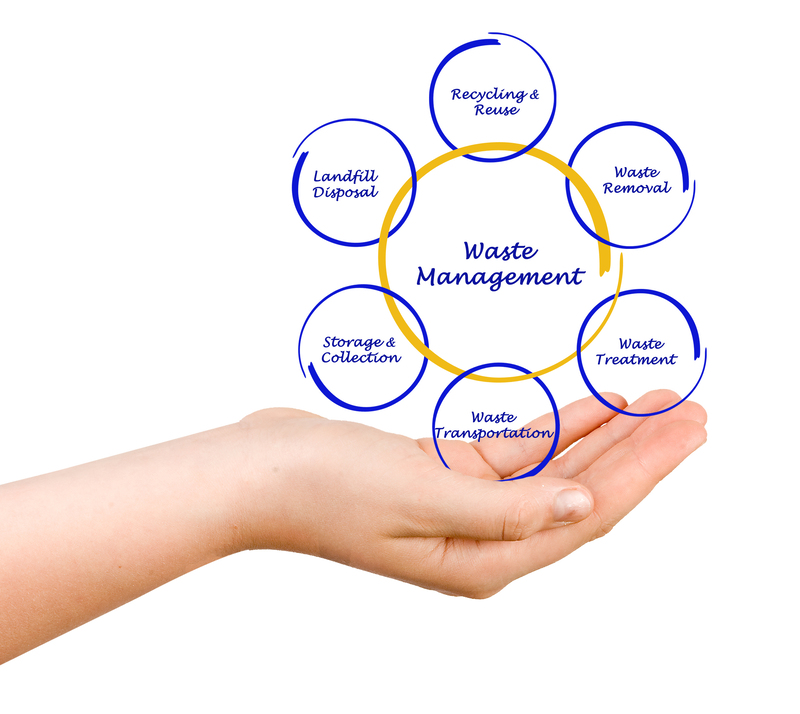Transforming Waste into Resources in Schools: Towards a Sustainable Future
Transforming waste into resources in schools is not just an environmental responsibility but an extraordinary opportunity for educational institutions to foster sustainability, reduce their ecological footprint, and inspire the next generation. By reimagining how waste is perceived and handled, schools can create eco-friendly environments that serve as models for the broader community. In today's world, where resource depletion and pollution threaten future generations, adopting innovative waste management solutions in schools is both crucial and urgent.
Why Schools are Key Players in Waste Transformation
Schools are microcosms of society. With thousands of students, teachers, and staff generating a significant amount of waste every day, educational facilities hold great potential to lead the charge in transforming waste into usable resources. When schools implement sustainable waste practices, they don't just impact their immediate environment--they set a precedent for families and the wider neighborhood.
- Education: Instilling the importance of waste reduction and resource conservation in students from a young age fosters lifelong sustainable habits.
- Scale: With millions of schools worldwide, even small changes in waste management can have a meaningful global impact.
- Innovation: Schools can serve as testbeds for creative, community-driven waste transformation projects.
- Leadership: By leading by example, educational institutions can inspire other organizations to follow sustainable paths.

Understanding Waste Generation in Schools
Before schools can efficiently transform waste into resources, it's vital to analyze the types and quantities of waste they produce. Typical school waste consists of:
- Organic waste (food scraps, garden clippings)
- Papers and cardboard (worksheets, packaging)
- Plastics (bottles, packaging, wrappers)
- Metals and glass
- E-waste (obsolete computers, batteries)
Understanding these waste streams is the first step to implementing effective waste transformation strategies in schools.
The Benefits of Transforming School Waste into Resources
Transforming school waste into valuable resources brings numerous advantages:
- Environmental Impact: Reduces landfill demand, decreases methane emissions, and conserves resources.
- Cost Savings: Lower waste disposal costs and potential revenue from recyclables or compost.
- Educational Value: Offers hands-on learning for students, from science to entrepreneurship.
- Community Engagement: Builds awareness and participation among students, teachers, and parents.
Ultimately, these benefits empower schools to take an active role in protecting the environment while providing engaging, practical learning opportunities for students.
Key Strategies for Waste Transformation in Schools
1. Comprehensive Waste Auditing
The journey towards transforming waste in educational institutions begins with a thorough waste audit. This process involves:
- Identifying major sources and types of waste
- Measuring quantities generated over a set period
- Setting achievable reduction and recycling targets
Auditing ensures data-driven decision making and helps schools prioritize actions for the greatest effect.
2. Waste Segregation and Recycling Programs
Implementing effective waste segregation is essential. This means providing color-coded bins for recyclables, organic waste, paper, plastics, and non-recyclables across the campus. These programs should include:
- Clear signage with images and descriptions to aid correct sorting
- Regular education sessions for students and staff
- Partnerships with local recycling facilities
Consistent waste sorting and recycling turns former trash into valuable raw materials, closing the resource loop and conserving the planet's assets.
3. Composting Food and Green Waste
Food waste and garden clippings form a large part of school waste. By establishing on-site composting systems, schools can:
- Convert organic waste into nutrient-rich compost for school gardens
- Educate students about natural cycles and soil health
- Reduce methane emissions from landfills
Some schools even use worm composting (vermicomposting) as an interactive method, allowing students to see firsthand how waste transforms into fertile soil.
4. Upcycling and Creative Reuse Projects
Transforming school waste into resources isn't limited to recycling and composting. Upcycling--reusing discarded items to create something of higher value or function--can be a cornerstone of environmental education. Examples include:
- Art projects using plastics, bottles, and paper
- Building bird feeders, planters, or furniture from old materials
- Repurposing clothing or textiles for crafts
Such activities engage creativity, foster teamwork, and demonstrate the potential value in "waste."
5. Reducing Single-Use Plastics
Minimizing single-use plastics is a critical step in sustainable schools. Initiatives may include:
- Switching to reusable water bottles and containers
- Eliminating plastic cutlery, straws, and plates in cafeterias
- Working with suppliers to reduce packaging
This resource transformation in schools not only diverts waste but also cultivates long-term sustainable habits in students.
6. E-Waste Collection and Management
Electronic waste poses unique challenges due to hazardous components. Schools can establish safe e-waste collection points, arrange for certified recycling, and even use old computers for parts or innovative tech projects. Regular e-waste drives raise awareness and prevent dangerous materials from entering the environment.
Educational Integration of Waste-to-Resource Initiatives
Classroom Curriculum: Embedding waste transformation into the curriculum ensures lasting change. Science, geography, and social studies lessons can include waste audits, ecology, recycling processes, or the chemistry of compost.
Clubs and Extracurricular Activities: Establish Eco-Clubs or Green Teams where students lead waste sorting, upcycling, and environmental campaigns. Competitions, such as "Zero Waste Week," encourage active participation and creative solutions.
Project-Based Learning: Encourage students to design and implement their own waste transformation projects. This hands-on approach boosts skills such as critical thinking, teamwork, and leadership, while creating tangible environmental benefits.
Case Studies: Schools Turning Waste into Valuable Resources
1. The Composting Program at Green Valley Primary
Green Valley Primary reduced food waste by 50% by launching an on-site composting program. Students from all grades learned how to compost food scraps, which were then used to enrich the school's vegetable garden. The school now supplies its cafeteria with fresh, organic produce, closing the waste loop and reinforcing sustainability across all ages.
2. Creative Upcycling at Bright Horizons School
At Bright Horizons, art teachers collaborated with local businesses to collect plastic bottles, cans, and textiles. These materials found new life in sculptures, wall art, and functional furniture, displayed throughout the campus. Students even sold some items at fundraisers, demonstrating the economic value of waste transformation.
3. Digital Device Recycling at Lakeside High
Lakeside High established e-waste collection bins for old electronics, partnering with certified recyclers to safely process the materials. The IT department involved students in refurbishing select devices, donating them to local charities--effectively extending the lifecycle of each item and reducing resource consumption.
Overcoming Challenges in School Waste Transformation
While turning school waste into resources offers immense benefits, schools can face a variety of hurdles:
- Limited budgets for equipment or programs
- Lack of awareness or participation among students and staff
- Confusion over recycling or composting procedures
- Logistics of waste storage and collection
Overcoming these challenges requires innovation and community involvement:
- Leverage grants and partnerships with local governments or environmental organizations
- Conduct regular awareness campaigns for students, teachers, and custodial staff
- Create simple, visual guides on what goes in which bin
- Engage parents and the wider community for support and collaboration
Advanced Approaches: The Future of School Waste-to-Resource Systems
Smart Waste Management with Technology
Schools can now deploy smart bins that automatically sort and compact waste, track recycling rates, and send reports to administrators. Gamification apps allow students to log their sustainability actions, fostering friendly competition.
Circular Economy Models
Some pioneering schools are moving towards a 'circular economy' mindset, where every material is reused, recycled, or composted on-site. Food grown in the school garden using compost returns to the cafeteria, completing a full sustainability loop.
Collaborative Networks and Certification
Joining eco-schools programs or attaining certifications (such as Green Flag status) can provide schools with frameworks, guidance, and recognition, bolstering their waste-to-resource initiatives' longevity and effectiveness.

Steps to Launching a Waste Transformation Program in Your School
- Start with a waste audit to identify baseline data and key issues.
- Form a green team involving students, teachers, and custodians.
- Set clear, achievable goals for waste reduction and resource recovery.
- Design an education program with lessons, workshops, and awareness drives.
- Establish sorting stations with easy-to-follow guides.
- Partner with local governments or businesses for logistics and funding.
- Celebrate milestones and share successes with the wider community.
Conclusion: Empowering Change--One School at a Time
Transforming waste into resources in schools is no longer a luxury--it is a necessity in a world facing resource scarcity and environmental challenges. Through strategic planning, education, and community engagement, schools can become centers of positive environmental action. By transforming waste into valuable resources, teaching sustainable habits, and demonstrating real-world solutions, schools not only reduce their carbon footprint but empower a new generation to think differently about what we throw away.
As more educational institutions embrace these transformative practices, the cumulative impact will be profound--shaping not just greener schools, but a greener future for all.
Ready to start transforming school waste into resources at your institution? Begin today with a simple waste audit, and watch your school blossom into a model of sustainability and innovation.